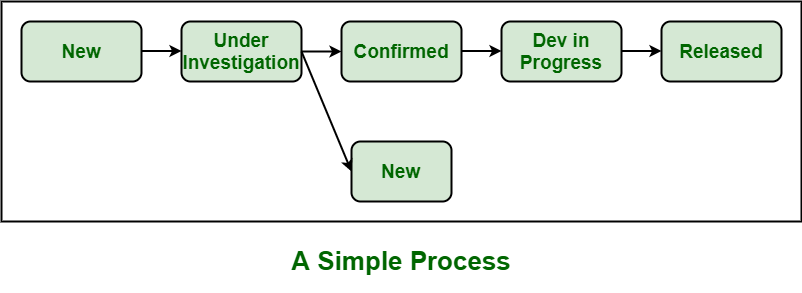Defect Triage- a simple process
Last Updated :
09 May, 2023
Defect triage is a simple process that helps the development team to resolve and fix defects simply based on their severity and priority. It is a process to prioritize defects on basis of their severity, risk caused, and frequency of occurrence.

- New : Whenever a defect is identified for first time, this new defect is then added to defect tracking system.
- Under Investigation : The team lead then determine or evaluate a defect report whether it is correct or not. Following guidelines are taken into consideration while evaluating a defect report :
- Defect report format is correct or not?
- Does this particular defect is reported before or not?
- Who has identified the defect?
- What is the cause of defect or how severe the issue is?
- Rejected : If the defect report is duplicate, or triage team is not being able to replicate the issue, or proper defect report format is not maintained, then particular defect triage report is rejected.
- Confirmed : If all the things are correct then defect report is confirmed and further waits for resolving the issue or defect.
- Dev in Progress : In this, the defect is in sprint i.e. defect is under process especially for resolving and fixing defect. In simple words, defect is under resolution.
- Released : Finally, defect is completely resolved and fixed.
Rules of Defect Triaging : There are several rules of defect triaging as given below :
- Defects that are being reported needs to be reviewed.
- Defects that are being accepted needs to be prioritized and should also have severity attached.
- Defects that are being rejected should have plausible i.e. reasonable or believable descriptions for the testing team.
- Each and every defect needs to be assigned and given to appropriate team or individual.
- Analysis should be done regarding the main or root cause of every defect that is being accepted.
Some Challenges that occur during Defect Triaging :
- Sometimes, standard defect tracking system is not available.
- Priorities and severities are not assigned properly to particular defects.
- No proper communication among testing team, development team, business stakeholders, and product owner.
- No proper communication during defect triage meetings.
Some Benefits of Defect Triage :
- Prioritization of defects: Defect triage helps to identify the most critical defects and prioritize them based on their severity, impact. This ensures that the most critical defects are addressed first, reducing the risk of potential failures and increasing overall software quality.
- Resource allocation: Defect triage helps to allocate resources effectively to address defects. This ensures that the most critical defects are assigned to the most qualified team members, reducing the time and effort required to resolve them.
- Improved communication: Defect triage facilitates communication between stakeholders such as developers, testers, and project managers. This helps to ensure that everyone is aware of the defects and their priority, reducing the chances of miscommunication or delays in resolving them.
- Reduction of rework: Defect triage helps to identify defects early in the software development lifecycle, reducing the likelihood of defects being carried forward to subsequent stages of development. This can help to minimize rework and save time and effort in the long run.
Share your thoughts in the comments
Please Login to comment...